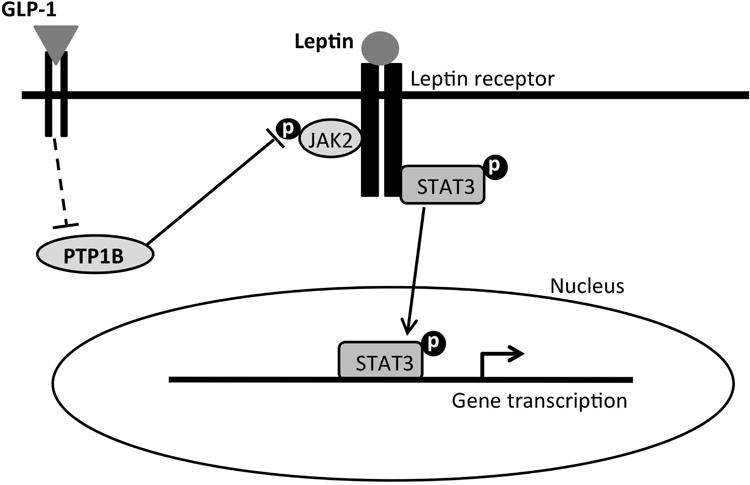Figure 6.

A simplified proposed summary of intracellular signaling mechanisms mediating the intake inhibitory and weight loss effects of leptin-liraglutide combination treatment. Leptin binds to the long form of leptin receptor (LepRb), which activates Janus kinase 2 protein (JAK2) and results in the phosphorylation of various tyrosine residues and the signal transducer and activator of transcription-3 (pSTAT3). pSTAT3 translocates to the nucleus to mediate the transcription of genes related to food intake and body weight control. GLP-1 on the other hand, binds to GLP-1 receptor and inhibits PTP1B via a direct or indirect pathway (broken lines). PTP1B normally dephosphorylates JAK2 and deactivates it. Inhibition of PTP1B therefore disinhibits pJAK2. The disinhibition of pJAK2 by GLP-1R activation, together with the activation of LepRb signaling, results in a combinatorial increase in pSTAT3, which is proposed to mediate the enhanced intake suppression and body weight loss effects of liraglutide and leptin co-administration.
